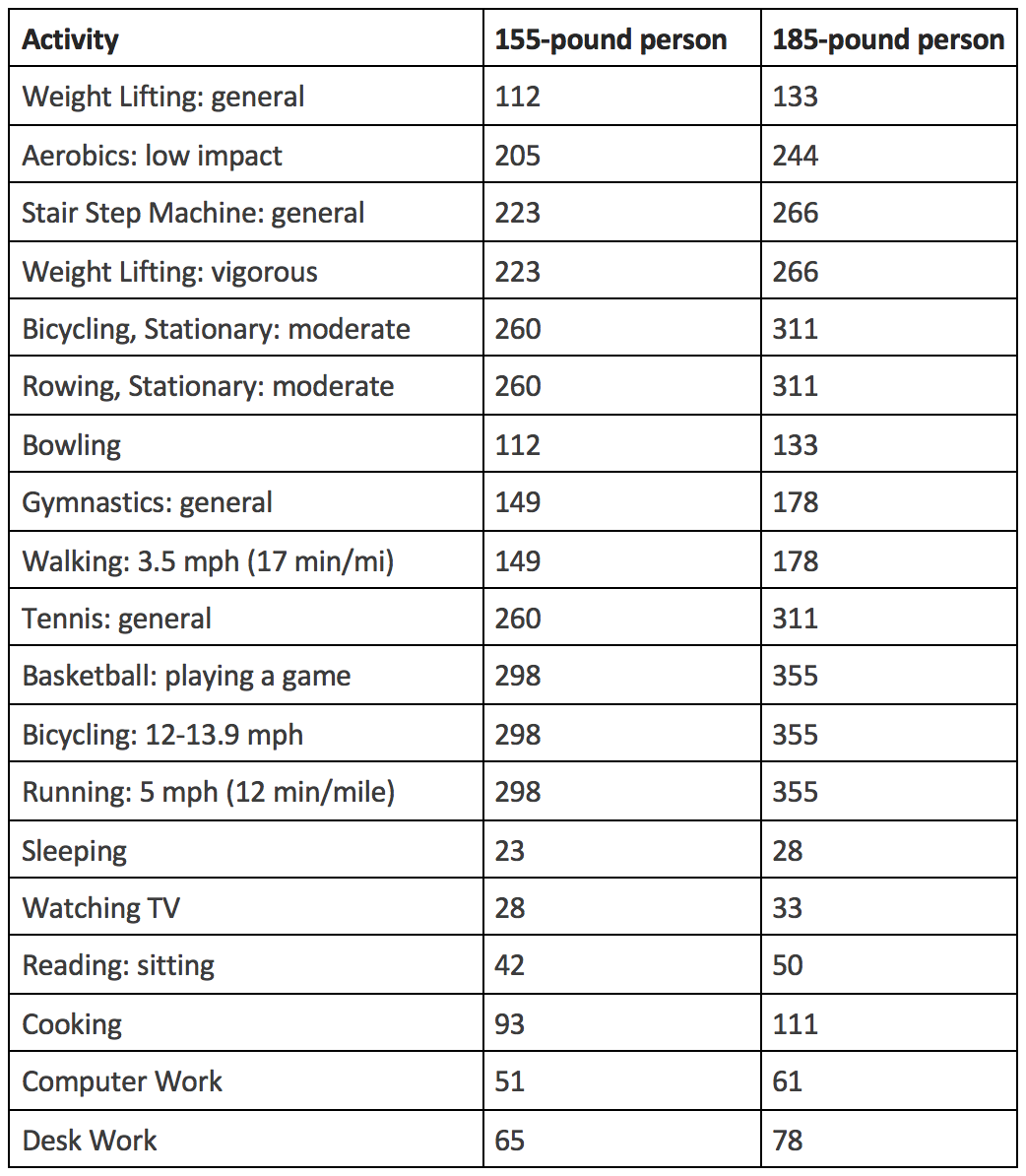Today we are talking about the Topic ‘Average Person Burn –The average person burns around 1,800 to 2,500 calories per day. On a day-to-day basis, the human body expends energy through various activities such as breathing, digestion, and physical movement.
This energy expenditure, measured in calories, is essential for maintaining bodily functions and supporting an active lifestyle. However, the number of calories burned can vary depending on factors such as age, sex, weight, and activity level. While sedentary individuals may burn closer to the lower end of the range, those who engage in regular exercise and have higher muscle mass tend to burn more calories.
Understanding one’s calorie expenditure can be valuable for weight management, as it provides a basis for balancing calorie intake with physical activity.
Factors Affecting Daily Calorie Burn
Understanding the factors that influence our daily calorie burn can provide valuable insights into maintaining a healthy weight and achieving fitness goals. Several key factors come into play, including basal metabolic rate, physical activity level, and the thermic effect of food. Let’s delve into each of these factors and how they impact the number of calories we burn each day.
Basal Metabolic Rate
Our basal metabolic rate (BMR) is the number of calories our bodies burn at rest to maintain basic physiological functions such as breathing, circulation, and cell production. While we may not be actively engaged in physical activity, our bodies still require energy to carry out these essential operations. Factors that influence BMR include age, gender, body composition, and genetics.
According to research, around 60-75% of the calories burned each day comprise our basal metabolic rate. The BMR is higher in individuals with more lean muscle mass as muscles are more metabolically active than fat. Additionally, men generally have higher BMR than women due to greater muscle mass and higher testosterone levels.
Physical Activity Level
The level of physical activity we engage in throughout the day also significantly affects our daily calorie burn. Physical activity includes everything from doing household chores to structured exercise sessions. Whether we opt for a sedentary lifestyle or engage in regular physical activities, it directly impacts the number of calories we burn.
Individuals who lead a sedentary lifestyle and engage in minimal physical activity will burn fewer calories compared to those who lead an active lifestyle. Engaging in exercises like running, swimming, or even brisk walking increases our overall energy expenditure and contributes to a greater calorie burn.
Thermic Effect Of Food
The thermic effect of food (TEF) refers to the energy required by our bodies to digest, absorb, and process nutrients from the foods we consume. Different nutrients have different thermic effects, with protein having the highest TEF followed by carbohydrates and fats. This means that consuming a protein-rich meal can enhance the number of calories burned during digestion.
Research suggests that TEF generally accounts for about 10% of our total daily calorie burn. However, it’s important to note that TEF can vary depending on the composition and quantity of the meal consumed. Including nutrient-dense foods in our diet can help optimize the thermic effect, thus increasing our overall calorie burn.
In conclusion, basal metabolic rate, physical activity level, and the thermic effect of food are important factors that determine the number of calories the average person burns each day. By understanding these factors, we can make informed decisions about our lifestyle, exercise routine, and dietary choices to support our fitness and weight management goals.

Credit: www.caloriesecrets.net
Calculating Basal Metabolic Rate
When it comes to understanding weight loss or maintaining a healthy weight, it is crucial to have a clear understanding of how many calories your body burns daily. This is where the concept of Basal Metabolic Rate (BMR) comes into play. BMR refers to the number of calories your body requires to perform vital functions while at rest, such as breathing, circulating blood, and regulating body temperature. Calculating your BMR can provide valuable insights into creating an effective weight management plan tailored to your individual needs.
Harris-benedict Equation
The Harris-Benedict Equation is one of the most commonly used methods to calculate BMR. This equation takes into account your age, weight, height, and gender to estimate your daily calorie needs. The formula for men is:
| Formula for Men |
|---|
| BMR = 88.362 + (13.397 × weight in kg) + (4.799 × height in cm) – (5.677 × age in years) |
For women, the formula is slightly different:
| Formula for Women |
|---|
| BMR = 447.593 + (9.247 × weight in kg) + (3.098 × height in cm) – (4.330 × age in years) |
By plugging the appropriate values into these equations, you can estimate your BMR and get an idea of how many calories your body needs to maintain its current weight.
Mifflin-st Jeor Equation
Another commonly used equation to calculate BMR is the Mifflin-St Jeor Equation. This formula takes into account the same variables as the Harris-Benedict Equation but with slight modifications. The formulas for men and women are as follows:
| Formula for Men |
|---|
| BMR = (10 × weight in kg) + (6.25 × height in cm) – (5 × age in years) + 5 |
| Formula for Women |
|---|
| BMR = (10 × weight in kg) + (6.25 × height in cm) – (5 × age in years) – 161 |
Both the Harris-Benedict Equation and the Mifflin-St Jeor Equation provide reasonable estimates of BMR. However, it’s important to note that these equations offer general estimates and may not accurately reflect an individual’s metabolic rate. Factors such as body composition can significantly influence BMR.
Body Composition And Bmr
Body composition, specifically the ratio of muscle to fat, plays a crucial role in determining BMR. Muscles require more energy to maintain than fat, meaning individuals with a higher muscle mass tend to have a higher BMR. This is why strength training and building muscle can be beneficial for weight management.
Additionally, age also affects BMR. Generally, as we age, our metabolic rate decreases due to natural hormonal changes and a decrease in muscle mass. Therefore, it is important to adjust calorie intake and exercise levels as we get older.
Understanding how BMR is calculated and the impact of factors like body composition can help individuals make informed decisions about their calorie intake and exercise routine. By focusing on maintaining a healthy weight, individuals can maximize their overall well-being and reduce the risk of various health conditions associated with excess weight.
Estimating Calorie Burn Through Physical Activity
Physical activity plays a significant role in how many calories we burn each day. Whether it’s going for a jog, hitting the gym, or simply doing household chores, every movement contributes to our caloric expenditure. Understanding the calorie burn associated with different activities can help design an effective fitness routine and maintain a healthy weight.
Moderate Intensity Activities
Moderate-intensity activities are those that cause a noticeable increase in heart rate and breathing but still allow for comfortable conversation. Engaging in moderate-intensity activities can help burn calories and boost overall fitness. Here are some examples of moderate-intensity activities along with their estimated calorie burn for the average person:
| Activity | Calories Burned (per hour) |
|---|---|
| Brisk walking | 280-350 |
| Cycling (leisurely pace) | 280-350 |
| Swimming (light to moderate effort) | 330-420 |
| Dancing | 330-420 |
Vigorous Intensity Activities
Vigorous-intensity activities require more effort and lead to a substantial increase in heart rate and breathing. These activities challenge the body and often result in sweating. Incorporating vigorous-intensity activities into your routine can help burn calories and improve cardiovascular fitness. Here are some examples of vigorous-intensity activities and their estimated calorie burn for the average person:
| Activity | Calories Burned (per hour) |
|---|---|
| Running (8 mph) | 700-900 |
| High-intensity interval training (HIIT) | 500-800 |
| Jumping rope | 680-820 |
| Aerobic dancing | 520-740 |
Non-exercise Activity Thermogenesis (neat)
Non-Exercise Activity Thermogenesis (NEAT) refers to the calories burned through non-exercise daily activities such as standing, walking, or fidgeting. These activities may not seem strenuous, but they contribute to the total number of calories burned throughout the day. Unlike structured exercise, NEAT is often overlooked but can have a significant impact on calorie expenditure. Incorporating more NEAT into your daily routine can be beneficial for weight management and overall health.
Remember, these are general estimates and actual calorie burn may vary depending on factors such as body weight, age, gender, and individual metabolism. Nevertheless, staying active and engaging in physical activities can help you achieve a healthier and more active lifestyle.
Credit: www.quora.com
Overall Daily Calorie Burn
When it comes to managing our weight and overall health, understanding the number of calories we burn each day is crucial. The overall daily calorie burn is the total number of calories expended by an individual in a day. It includes both the calories burned through basic bodily functions and those burned through physical activity.
Average Calorie Burn For Sedentary Individuals
For individuals with sedentary lifestyles, who have minimal physical activity, the average calorie burn is relatively low. Sedentary activities like desk jobs, prolonged sitting, and a lack of exercise contribute to a lower calorie burn. On average, sedentary individuals burn around 1,800 to 2,200 calories per day.
Caloric Needs For Active Individuals
On the other hand, active individuals who engage in regular physical activity have higher caloric needs. Activities like running, swimming, weightlifting, or even brisk walking elevate the overall daily calorie burn. The more physically active you are, the more calories you burn. Active individuals generally burn between 2,500 to 3,500 calories per day.
Maintaining A Healthy Calorie Balance
To maintain a healthy calorie balance, it’s essential to be aware of your daily calorie intake and expenditure. If you consume more calories than you burn, you may gain weight. If you burn more calories than you consume, you may lose weight. Finding the right balance is key to achieving optimal health and body weight.
By tracking your calorie intake and incorporating regular exercise into your routine, you can effectively manage your weight and maintain a healthy lifestyle. It’s important to consult with a healthcare professional or a registered dietitian to determine your specific calorie needs based on factors such as age, gender, weight, and activity level.
Remember, achieving a healthy calorie balance is not just about restricting calories but also nourishing your body with nutrient-dense foods. Emphasize a balanced diet consisting of fruits, vegetables, lean proteins, whole grains, and healthy fats.

Credit: blog.decathlon.in
Frequently Asked Questions How Many Calories Does The Average Person Burn A Day?
How Many Calories Does The Average Person Burn In A Day?
The average person burns around 1500-2000 calories per day, depending on factors like age, weight, and activity level.
What Activities Burn The Most Calories?
High-intensity workouts like running, cycling, and swimming burn the most calories, followed by weightlifting and cardio exercises.
How Can I Increase The Number Of Calories I Burn?
You can increase calorie burn by incorporating activities like walking or biking instead of driving, taking the stairs instead of the elevator, and incorporating strength training into your fitness routine.
Conclusion
To sum up, understanding the number of calories burned by the average person in a day is crucial for maintaining a healthy lifestyle. By considering factors like age, weight, activity level, and basal metabolic rate, we can estimate a daily calorie expenditure.
A balanced diet and regular physical activity tailored to individual needs can help achieve fitness goals and maintain overall well-being. Remember, it’s not just about the numbers, but about making sustainable and healthy choices for a happier tomorrow.
